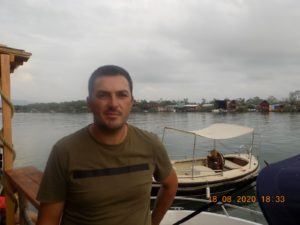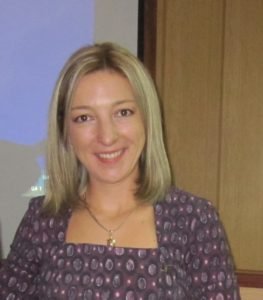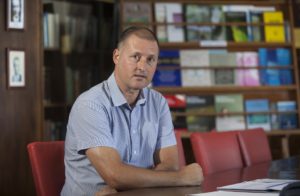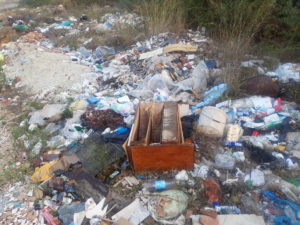Experts warn that the Adriatic is becoming a dumping ground for dangerous waste: Less fish, more plastic
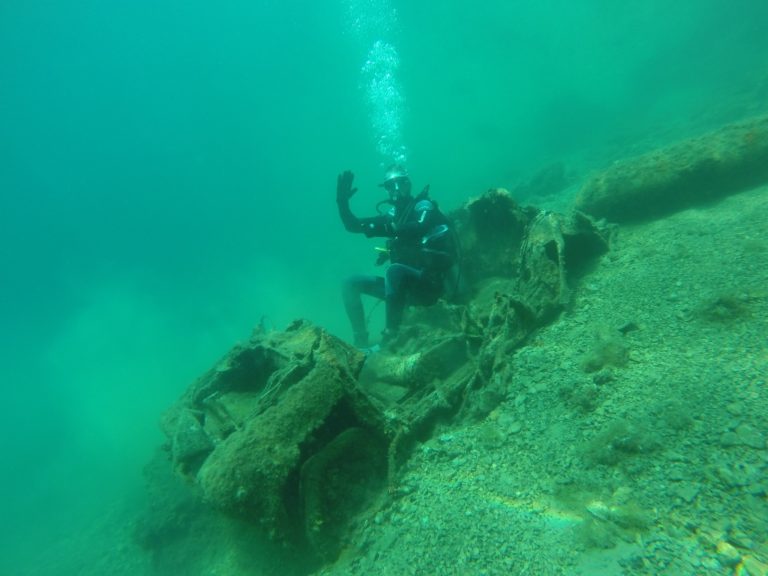
Seven out of 10 fish from the Adriatic contain plastic! For precisely this reason, the Adriatic has been proclaimed one of Europe’s three most polluted seas, which could also have far-reaching consequences for the economies of the six countries this sea splashes against. Pollution from this material is the greatest threat to biodiversity on the planet after climate changes.
Ivo Knežević, a fisherman from Ulcinj, says he is often astonished by the quantity of waste he sees on the open sea, several kilometres from the mouth of the River Bojana.
“Earlier we witnessed the fact that there would be various types of waste after a strong southerly wind. But, that is not a case anymore. The plastic is everywhere now” he points out.
The situation deteriorates with the first autumn rains, when the brooks and streams start flowing again and bring down waste discarded in dried-up watercourses. When a supermarket carrier bag or plastic bottle is not thrown into a trash can, trouble starts for those who live next to the sea and from it.
“We end up eating any plastic bag that is not thrown away properly. In other words, we are killing ourselves,” Knežević claims in an interview for the Centre for Investigative Journalism, BIRN and Monitor (CIN-CG/BIRN/Monitor).
Divers in Ulcinj also say that it is getting more and more difficult to distinguish the seafloor from a landfill site.
“There is hardly a single place on our seafloor where I haven’t seen discarded trash. There are piles of plastic bottles, cans, chairs and even wheel rims from trucks,” Adi Karamanaga, the famous diver from Ulcinj, says for CIN-CG/BIRN/Monitor.
He is convinced that this issue is more serious every day, while the fish stock is ever smaller: “I don’t think there is a single organism in the sea any more that has not been in contact with plastic. All this is dangerously undermining Montenegro`s reputation as a beautiful tourist destination and our sea as a source of quality fishery products, endangering us and our local communities which crucially depend on the sea,” Karamanaga adds.
Local and foreign waste
Precisely because of the quantity of plastic in it, an international team of experts, in a study published in the journal Marine Pollution Bulletin, declared the Adriatic one of Europe’s three most polluted seas (after the north-eastern part of the Mediterranean and the Celtic Sea). Waste is generated by around four million people who live along the Adriatic Coast, and that number increases during the tourist season almost six times.
Of the waste that finishes up in the Mediterranean, the highest amount per capita is generated from Montenegro! As much as eight kilograms per year, according to the data from the International Union for Conservation of Nature (IUCN).
The environmental activist Azra Vuković states that 80–90% of waste in the Adriatic is made up of plastic.
“Usage period of disposable plastic is 20 minutes, while much longer is necessary for it to biodegrade, if that happens at all. It primarily includes carrier bags, cups, bottles, cigarette butts, fishing nets and plastic cutlery which make their way to the water in various ways, creating a major problem for the organisms that live in the sea, but also for those on the land,” Vuković says for CIN-CG/BIRN/Monitor.
Judging by the packaging, most of the waste comes from Albania, along the River Bojana. There is also a lot of waste from Montenegro, because the Bojana flows out of Lake Skadar, most of which belongs to Montenegro. Every resident of Montenegro, according to the data of the organisation Zero Waste Montenegro, on average uses up and throws away more than 600 non-recyclable plastic bags a year, which then end up in nature or in landfills.
“Just in the hinterland of the Long Beach (Velika plaža), 22 illegal landfills have been mapped on which, apart from construction and bulky waste, the plastic was also found. This threatens to cause lasting damage to the development of tourism on the Ulcinj Riviera,” Vuković says.
Even though the sea is an exceptionally precious resource, Montenegro does not have a worked-out model of monitoring and disposing of the waste in the sea. In the European Commission’s most recent report on Montenegro, managing waste was assessed as an area in which no progress has been made.
Pavle Radulović, the Minister of Sustainable Development and Tourism, who has in the meantime resigned and left the government because of a corruption scandal in his inspection department, announced with fanfares a ban on the use of plastic bags. Meanwhile, this Ministry has announced that the drafting of a new state plan for managing waste for the period until 2026 will happen only next year. The adoption of the new Law on Waste Management has been announced since the beginning of this year. This should have been an obligation of the new government and parliament, just as, for example, the Croatian Assembly adopted a series of conclusions on micro plastics in the environment last year.
Montenegro has committed itself, within Chapter 27, to recycling 50% of its plastic, paper, metal and glass waste. The state intends to guarantee recycling of at least 70% of non-hazardous construction waste, in order to fulfil the closing benchmarks within the most demanding European chapter. This is stated in the Draft Action Plan for Fulfilling the Closing Benchmarks in Chapter 27 –Environment and Climate Change, which was subject to public debate until the end of August. Montenegro is supposed to fulfil these benchmarks by 31 December 2030.
“In the last few years, pollution from plastic waste has become more and more present, which creates extra pressure on the marine ecosystem,” it was stated in the last publicly announced annual Report of the Environmental Protection Agency of Montenegro for 2018. Along with the Ministry of Sustainable Development and Tourism and the Public Company for Management of Marine Assets, coastal local governments and the Administration for Inspection Affairs, the Agency is most responsible for the current state in the Montenegrin Sea and surrounding area.
Waste dump on the seafloor
Research carried out by scientists from countries bordering the Adriatic and Ionian Seas (Slovenia, Italy, Croatia, Albania, Bosnia and Herzegovina, Montenegro and Greece) within the project WELCOME (“WatEr LandsCapes sustainability thrOugh reuse of Marine littEr”), which is financed from European Union (EU) funds, has shown that there are on average 670 pieces of plastic per square kilometre in the Adriatic, which is considered a relatively high density of waste.
As many as 90% of the items from waste have been made from artificial materials. Analysis of one ton of the waste found on the beaches and in the sea shows that somewhat more than half of it is composed of plastic, 30% is wood, 10% metal and 6% textiles.
“Marine debris represent one of the biggest threats to the Mediterranean marine ecosystem with environmental, economic, security, health and cultural effects,” Dr Milica Mandić, a senior scientific collaborator at the Institute of Marine Biology in Kotor told CIN-CG/BIRN/Monitor.
She reminded that the Adriatic Sea is a semi-closed basin with weak currents and long retention of water masses which make it vulnerable to persistent pollution and stressed that the very unique and only partially protected area of the Bay of Kotor is particularly threatened.
“Those most at fault for what is found in it are the local population, tourists and, partly, inadequate waste management on the land. About 80% of the waste which is located beneath the surface of the sea in the Bay of Kotor originates from the land. Estimates are that in the area of the Bay of Kotor there are 160–250 kilograms of waste per square kilometre, and in the area of the open sea of the Montenegrin coast between 40 and 80 kilograms,” Mandić says.
She claims that the waste on the beaches is only the “tip of the iceberg” compared to the quantity that lies beneath the surface of the sea.
Dr Pero Tutman, an expert from the Institute of Oceanography and Fisheries from Split, says for CIN-CG/BIRN/Monitor that around 70% of waste from the land which finds its way into the sea ends up on the seabed and has been piling up there for years out of human reach.
“These quantities are increasing every year and even though the exact amount is not known they are certainly worrying. The effect on marine organisms is mainly through entanglement (for example, lost fishing tackle, plastic bags etc.), after which they ingest it and then waste reach into their digestive system. Larger marine organisms, such as mammals (seals, dolphins and whales) and turtles, and then sea birds are particularly exposed to this,” Dr Tutman emphasises.
The smaller the plastic, the bigger the problems
Plastic in the sea never disappears – it just breaks down into smaller pieces and enters into every sphere of the environment. Microplastics (plastic particles smaller than five millimetres) are found in all species of marine organisms. The problem with microplastics is that larger amounts of heavy metals, viruses and bacteria can also be absorbed into them.
This problem in the Adriatic was first detected during the implementation of the project DeFishGear. It was discovered that there were pieces of microplastic in the stomachs of seven out of 10 fish in our sea! So, we are consuming not only Adriatic specialities but plastic as well.
Research studies have shown that particles of plastic in the heart and human brain correlate with a risk from brain cancer and exposure of animals to plastic can lead to inflammation, infertility and carcinomas.
In the Kotor-based institute, research has also been carried out which was based on analyses of the contents of the stomachs of five different commercially important species of fish: sardines, horse mackerel, chub mackerel, mullet and sole.
“Pieces of microplastics more than five millimetres big were found in all the mentioned species, in greater or lesser quantities. Of the overall 235 samples analysed, microplastics were found in a quarter,” Dr Mandić said.
Carrier bags a “delicacy” for sea turtles
One of the most threatened species in the Adriatic is the sea turtle. Recent research published in the journal Current Biology has shown that, to turtles plastic bags smell like a tasty delicacy because of the bacteria and algae that accumulate on them. The scientists offered turtles several types of smells. Almost all the turtles reacted identically to the smell of food and the smell of a nylon bag which had been previously submerged in water, this journal reports.
“Research carried out until 2011 showed that, of the 54 dead loggerhead sea turtles (the dominant species of turtle in the Adriatic), waste was found in the digestive systems of 35% of them. The more there is of this waste, unfortunately the more sea turtles are threatened,” Dr Tutman says.
One of the most threatened and largest species of sea turtles in the world, which very rarely comes as far as the Adriatic, the leatherback turtle (Dermochelys coriacea), entangled a few years ago in a fishing net near Valdanos, but it was saved by a patrol officer of the Municipality of Ulcinj Hajrudin-Dino Šata.
Sea turtles perform so-called bioturbation, causing the mixing of sediment and the circulation of nutrients, thereby influencing preservation of the stability of the complex marine ecosystem.
Plastic waste on the beaches
The Public Company for Management of Marine Assets, which often organises beach clearing actions, told CIN-CG/BIRN/Monitor that, according to published analyses, the dominant waste is plastic packaging.
“On all beaches it has been determined that the biggest problem is plastic waste, which makes up more than 60% of total amount, in terms of both number and weight. The most common waste was cigarette butts and filters. Then come pieces of plastic 2.5–50 cm large, plastic packaging, plastic foil, sweet and food wrappers, as well as plastic bottle caps and lids,” Dr Mandić said.
Marine Assets announced that the Montenegrin government is preparing a monitoring programme, which includes waste in the sea, “all with the aim of improving the environment of the Adriatic Sea”.
“The new legal regulations must provide significant improvement and greater efficiency of the local businesses which are responsible for collecting and disposing of waste, but also development of mechanisms in Montenegro for recycling plastic, glass, metal and other packaging, as well as mechanisms for monitoring and reducing waste in production, such as the ban on single-use plastic products. This will all contribute to a reduction of the waste on the beaches and other public areas,” Miljan Živković, from the Public Company for Management of Marine Assets, said for CIN-CG/BIRN/Monitor.
However, dr Mandić considers the situation fairly worrying, “especially bearing in mind the fact that not much is being done on solving the problem, that there are no legal regulations dealing with the issue of marine debris, but also that there are not sufficient national funds for fundamental scientific research which would deal with the problem of the effect of the accumulation and transfer of waste on the health of marine organisms, and consequently also on humans.”
Given that marine debris crosses national borders and that, depending on the currents and winds, it can travel a significant distance in a short time, Dr Tutman says it is necessary to discuss this problem and its solution and work in coordination with the other countries “with which we share the Adriatic Sea”.
The environment ministries of Croatia, Montenegro and Albania agreed in Dubrovnik at the beginning of 2018 to “firm up cooperation and make use of the available European funds with the aim of solving the problems with marine debris in the Adriatic Sea”.
However, in the last two years, little of that has actually been done. The results within the common agreements and initiatives, such as the Joint Commission for the Protection of the Adriatic Sea and Coastal Areas, the Adriatic Trilateral and the EU Strategy for the Adriatic–Ionian Region are still not visible.
The Centre for the Protection and Research of Birds: The use of carrier bags to be banned
“Waste and plastic do not only affect people and they are not exclusively an issue of visual destruction of nature. Very often birds feed their chicks with microplastics, which not even marine mammals are immune to,” it is stated in a declaration by the Centre for the Protection and Research of Birds, whose activists have called on citizens to sign a petition for a ban on plastic bags. So far, 6,439 signatures have been gathered.
The Martin Schneider Jacoby Association has this year organised a series of operations to clear up Ulcinj’s beaches, Salina and the Pine Forest.
“Our volunteers came across the whole plastic waste landfills. We had expected a bad situation but not so many layers of deposited plastic waste, which the rain had covered over with soil, that we were almost falling through plastic while cleaning,”, Zenepa Lika, the president of the association, said.
Bearing in mind the fact that the best results have been achieved by education, the Ulcinj Rotary Club has recently implemented the project Zero Waste Promotion.
A member of that organisation Boris Marđonović said for CIN-CG/BIRN/Monitor that implementation of this project was financially supported by a group of tourists from Norway who spent the last summer in the Ulcinj Riviera for the first time. They were enchanted by the beauty of the city.
“But when they saw the amount of the plastic waste, they decided to launch a project through the Rotary Club insisting that kindergarten-age children be primarily involved in it.” According to Marđonović “solving this problem is an indicator of our development as a civilised society,”
We eat a credit card every week
At a global level, since 1900 about eight billion tons of plastic have been produced. Half of that quantity has been produced in the last 13 years. An alarming warning was sent from the United Nations Environment Assembly, which was held last year in Nairobi – the world’s seas and oceans are in a “plastic crisis”.
“By the middle of this century, 99% of sea birds will be poisoned by plastic, and even now more than a million are dying because of it,” Peter Malvik from the UN’s Environmental Programme said.
This institution states that every week we eat the quantity of plastic contained in a credit card, while the Ellen MacArthur Foundation warns that by 2050 there will be more plastic in the sea than fish.
The European Commission passed the European Strategy for Plastic in a Circular Economy in January 2018. Las year in June, a directive was adopted whereby new rules are stipulated for reducing and limiting the use of single-use plastic products, plastic cutlery, straws, earplugs etc. Member states are obligated to incorporate this into their national legislation by 2021. Besides preventing and reducing the effect of single-use plastic products, the aim is to move to other products and material in a sustainable way.
Mustafa CANKA

